 Last additions - Chiyoda-ku 千代田区 Last additions - Chiyoda-ku 千代田区 |

Mar 28, 2007
|
|

Sakuradamon Gate, near here was where Lord Ii Naosuke from Hikone was assassinated. 桜田門Mar 28, 2007
|
|

Moat near Sakashita-mon GateMar 28, 2007
|
|

Sakashita-mon Gate, closest to the Imperial Household Agency and entrance to Inui-dori, a 600-meter path lined with cherry blossoms. 坂下門坂下門Mar 28, 2007
|
|

Mar 28, 2007
|
|

Sakashita-mon Gate 坂下門Mar 28, 2007
|
|

Miyazaki Prefecture's official tree 都道府県の木(宮崎県の木)Mar 28, 2007
|
|

桔梗門Mar 28, 2007
|
|

Mar 28, 2007
|
|

Mar 28, 2007
|
|

Mar 28, 2007
|
|

Tatsumi Turret was used for defense with holes to drop stones and windows to shoot arrows. 翼櫓(桜田二重櫓)Mar 28, 2007
|
|
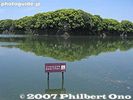
Corner of moatMar 28, 2007
|
|

Mar 28, 2007
|
|

Mar 28, 2007
|
|

Tatsumi Turret 翼櫓(桜田二重櫓)Mar 28, 2007
|
|

Tatsumi Turret 翼櫓(桜田二重櫓)Mar 28, 2007
|
|

Sakuradamon Gate 桜田門Mar 28, 2007
|
|

Mar 28, 2007
|
|

Mar 28, 2007
|
|

Hyakunin Bansho Guardhouse where 100 samurai guards guarded the entrance to the Honmaru, the castle's main keep. 百人番所Mar 28, 2007
|
|

Mar 28, 2007
|
|

Mar 28, 2007
|
|

Mar 28, 2007
|
|

Mar 28, 2007
|
|

Mar 28, 2007
|
|

Otemon Gate 大手門Mar 28, 2007
|
|

Doshin Bansho Guardhouse where guards kept watch on the entourage of daimyos visiting the castle. 同心番所Mar 28, 2007
|
|

Mar 28, 2007
|
|

Mar 28, 2007
|
|

Kitahane-bashimon Gate. Right behind the castle tower foundation. 北桔橋門Mar 28, 2007
|
|

Tatsumi Turret, also called Sakurada-Niju Turret 翼櫓(桜田二重櫓)Mar 28, 2007
|
|

Otemon Gate 大手門Mar 28, 2007
|
|

Otemon Gate, Edo Castle's main gate. 大手門Mar 28, 2007
|
|

Corner of castle tower foundation.Mar 28, 2007
|
|

View of Hakucho moat from Shiomizaka Slope 汐見坂 白鳥濠Mar 28, 2007
|
|

Moat as seen from Kitahane-bashimon GateMar 28, 2007
|
|

Daibansho Guardhouse 大番所Mar 28, 2007
|
|

Side view of castle tower foundation.Mar 28, 2007
|
|

Corner of castle tower foundation.Mar 28, 2007
|
|

View of Kitahanebashi-mon GateMar 28, 2007
|
|

Top of castle tower foundation.Mar 28, 2007
|
|

Mar 28, 2007
|
|

Going up the castle tower foundation.Mar 28, 2007
|
|

Mar 28, 2007
|
|

Mar 28, 2007
|
|

Mar 28, 2007
|
|

Moat behind castle tower foundation.Mar 28, 2007
|
|

Mar 28, 2007
|
|

Going up the castle tower foundation.Mar 28, 2007
|
|

Mar 28, 2007
|
|

Mar 28, 2007
|
|

Castle tower's foundation on the lower right.Mar 28, 2007
|
|

Honmaru, Edo Castle's main keep. See the castle tower's foundation on the lower right. 本丸Mar 28, 2007
|
|

Mar 28, 2007
|
|

View from castle tower foundation.Mar 28, 2007
|
|

The original castle tower or donjon was completed in 1607 and later renovated in 1638 under Shogun Tokugawa Iemitsu as Japan's tallest castle tower at 58 meters (5 stories high).Mar 28, 2007
|
|

Behind Fujimi TurretMar 28, 2007
|
|

Behind Fujimi Turret 富士見櫓Mar 28, 2007
|
|

Mar 28, 2007
|
|

Foundation of castle tower or donjon. In 1657, there was a great fire in Edo and a stray ember set the castle tower on fire and destroyed it only 19 years after it was built. It was never rebuilt. 天守台Mar 28, 2007
|
|

Fujimi Turret 富士見櫓Mar 28, 2007
|
|

MoatMar 28, 2007
|
|

Mar 28, 2007
|
|

Mar 28, 2007
|
|

Fujimi Turret 富士見櫓Mar 28, 2007
|
|

Map of the East Gardens of the Imperial PalaceMar 28, 2007
|
|

Mar 28, 2007
|
|

Mar 28, 2007
|
|

Fujimi Turret 富士見櫓Mar 28, 2007
|
|

Fujimi Turret, Edo Castle 富士見櫓Mar 28, 2007
|
|

Fujimi Turret 富士見櫓Mar 28, 2007
|
|

MoatMar 28, 2007
|
|

Fujimi Turret 富士見櫓Mar 28, 2007
|
|

At one end of the Chowaden is Kitakuruma-yose entrance for Japanese dignitaries. 北車寄Mar 28, 2007
|
|

Fujimi Turret. Since Edo Castle had lost its castle tower which was never rebuilt, this turret served the functions of a castle tower. 富士見櫓Mar 28, 2007
|
|

Imperial Household Agency is the government agency which controls and manages the affairs of the Imperial family (Emperor, Empress, etc.). 宮内庁Mar 28, 2007
|
|

Mar 28, 2007
|
|
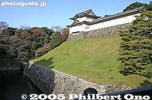
Fushimi Turret. This is what you see when you see Nijubashi Bridge. No one lives in this building. The Emperor's actual residence is not visible from the outside. 伏見櫓Mar 28, 2007
|
|

Fujimi Turret 富士見櫓Mar 28, 2007
|
|

Mar 28, 2007
|
|

Japanese flag and Fujimi TurretMar 28, 2007
|
|
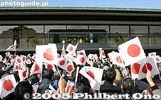
The Emperor and Empress appear on the veranda of this building on his birthday (Dec. 23) and Jan. 2. Well-wishers wave flags in the Kyuden Totei plaza. Also see the video at YouTube.Mar 28, 2007
|
|
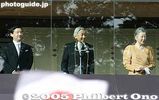
Crown Prince Hiro, Emperor Akihito, and Empress Michiko behind bulletproof glass on the veranda of the Chowaden Hall on the Emperor's Birthday. See more [url=http://photoguide.jp/pix/thumbnails.php?album=158]photos of the Emperor's birthday[/urlMar 28, 2007
|
|

The Imperial Palace's Chowaden Hall where formal banquets and meetings are held. This modern complex was built in 1968. In front is the Kyuden Totei plaza 長和殿、宮殿 東庭Mar 28, 2007
|
|

Nijubashi Bridge, the symbol of the Imperial Palace and Tokyo. One of Japan's most famous bridges. There is another bridge behind this one. 二重橋Mar 28, 2007
|
|

Fushimi Turret as seen from Nijubashi Bridge. Edo Castle was first built by Ota Dokan (太田道灌) in 1457 when Tokyo/Edo was still a small fishing village. Ota Dokan is thus regarded as one of Tokyo's forefathers. 伏見櫓Mar 28, 2007
|
|

Crossing Nijubashi Bridge to enter the Seimon Gate. 正門Mar 28, 2007
|
|

View from Nijubashi Bridge. The public can cross the bridge on the Emperor's Birthday (Dec. 23) and Jan. 2 for New Year's.Mar 28, 2007
|
|

In Japanese, the Imperial Palace is called "Kokyo" (皇居). This term begun to be used from 1948. Until then, it was called "Kyujo" (meaning palace castle 宮城)from the time Emperor Meiji took up residence.Mar 28, 2007
|
|

Guarded entrance to National DietMar 27, 2007
|
|

Throne used by the Emperor in the National Diet during the Meiji Period. 御椅子Mar 27, 2007
|
|

Diet pins. Photography is not allowed inside the building outside this lobby.Mar 27, 2007
|
|

Signboard for noblesMar 27, 2007
|
|

Ballot box and ballot slips. 投票箱・木札Mar 27, 2007
|
|

The free tour starts by going down to the House of Councillors Visitors' Lobby.Mar 27, 2007
|
|

Sample of various stones used in the building. As much as possible, domestic materials were used in the construction.Mar 27, 2007
|
|

House of Councillors Visitors' Lobby. Various exhibits are here. 参観ロビーMar 27, 2007
|
|

Inside the Central Tower. Stained glass and murals depicting the four seasons.Mar 27, 2007
|
|

Central TowerMar 27, 2007
|
|

The National Diet is Japan's political and legislative center. The capital of Japan. Free 60-min. tours (in Japanese only) are conducted every hour every day when the Diet is not in session.You can see the House of Councillors (Sangiin), the central tower, and the Emperor's Room.Mar 27, 2007
|
|

Side view of the House of Councillors (Sangi-in).Mar 27, 2007
|
|

On the right is the House of Councillors (Sangi-in). 参議院Mar 27, 2007
|
|

The National Diet building (Kokkai Gijido in Japanese) was built in Nov. 1936 after 17 years of construction. 国会議事堂Mar 27, 2007
|
|

The building is perfectly symmetrical on the left and right. On the left is the House of Representatives (Shugiin). 衆議院Mar 27, 2007
|
|

The Central Tower is 9 stories high. Below it is the Central Entrance whose bronze doors are opened only for the Emperor of Japan, State Guests, and new Diet members on the first day of a Diet session.Mar 27, 2007
|
|

National Diet of Japan 国会議事堂Mar 27, 2007
|
|
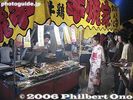
Food stallJul 19, 2006
|
|

Jul 19, 2006
|
|

Neputa is from Hirosaki, Aomori Pref.Jul 19, 2006
|
|

Jul 19, 2006
|
|
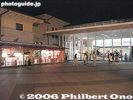
Yushukan war museumJul 19, 2006
|
|

Stage entertainment is also provided during the festival.Jul 19, 2006
|
|

The lanterns are written with the names of the donors.Jul 19, 2006
|
|
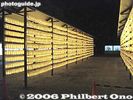
LanternsJul 19, 2006
|
|

The Nebuta then went back to the promenade.Jul 19, 2006
|
|
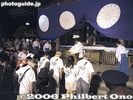
Jul 19, 2006
|
|

Nice to see a bit of Aomori in Tokyo.Jul 19, 2006
|
|

Jul 19, 2006
|
|
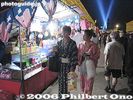
Jul 19, 2006
|
|

Awa Odori dancers also performed.Jul 19, 2006
|
|
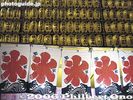
Jul 19, 2006
|
|
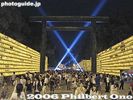
Jul 19, 2006
|
|

Jul 19, 2006
|
|

Neputa closeupJul 19, 2006
|
|

Next to the museum was a display of different lanterns, including a Neputa (left) and Nebuta (right).Jul 19, 2006
|
|
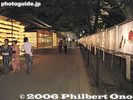
Path to the Yushukan war museum.Jul 19, 2006
|
|

Jul 19, 2006
|
|
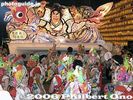
Rassera-rassera!Jul 19, 2006
|
|
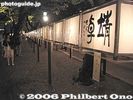
The bigger lanterns have artwork. Some of them were done by celebrities.Jul 19, 2006
|
|

Jul 19, 2006
|
|
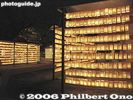
Jul 19, 2006
|
|

Jul 19, 2006
|
|

Jul 19, 2006
|
|
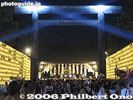
At night, 30,000 lanterns light up. A real summer spectacle.Jul 19, 2006
|
|

Jul 19, 2006
|
|
|
|
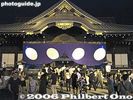
The shrineJul 19, 2006
|
|
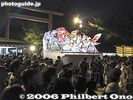
After the Nebuta made its way in front of the shrine, a short prayer was held.Jul 19, 2006
|
|

A bon dance around the base of the statue.Jul 19, 2006
|
|

Jul 19, 2006
|
|

Nebuta close-upJul 19, 2006
|
|

Nebuta float and haneto dancers. Also see the video at YouTube.Mitama Mtasuri at Yasukuni Shrine.Jul 19, 2006
|
|
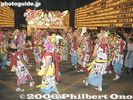
After the mikoshi, the Nebuta float and haneto dancers make an appearance.Jul 19, 2006
|
|

Jul 19, 2006
|
|

One of the giant spotlights used to accent the mikoshi, torii, and night sky.Jul 19, 2006
|
|

Jul 19, 2006
|
|

Yasukuni Shrine during the Mitama Matsuri before dark.Jul 19, 2006
|
|

Jul 19, 2006
|
|

At 6:30 pm, a mikoshi portable shrine was paraded along the promenade.Jul 19, 2006
|
|

Tanabata streamers festoon the gate.Jul 19, 2006
|
|
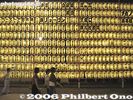
The lanterns are lit by lightbulbs, not candles.Jul 19, 2006
|
|

Spotlights hit the torii.Jul 19, 2006
|
|
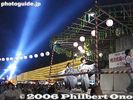
Jul 19, 2006
|
|
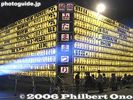
Jul 19, 2006
|
|

Spotlights create a silhouette of the statue of Omura Masujiro (1824-1869) 大村益次郎, founder of Japan's modern army.Jul 19, 2006
|
|
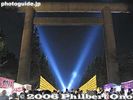
Yasukuni Shrine's main torii during Mitama MatsuriJul 19, 2006
|
|

Promenade to the shrineJul 19, 2006
|
|

Sumo arena. An exhibition sumo tournament is held every April.Apr 15, 2006
|
|

Food standsApr 15, 2006
|
|

Adding to the dignity of the shrine is a monkey show.Apr 15, 2006
|
|

Garden 神池庭園Apr 15, 2006
|
|

慰霊の泉Apr 15, 2006
|
|

Entrance to sumo arenaApr 15, 2006
|
|

Entrance to sumo arena.Apr 15, 2006
|
|

Monument for kamikaze pilots who died.Apr 15, 2006
|
|

Garden 神池庭園Apr 15, 2006
|
|

Rest houseApr 15, 2006
|
|

Apr 15, 2006
|
|

Mother Statue 母の像Apr 15, 2006
|
|

参集殿Apr 15, 2006
|
|

Apr 15, 2006
|
|

Memorial for Justice Radhabinod Pal, an Indian judge during the war crimes tribunal. He was a judge who voted for the innocence of Japan's war criminals.Apr 15, 2006
|
|

Memorial for military horses which died.Apr 15, 2006
|
|

Yushukan war museum 遊就館Apr 15, 2006
|
|

Apr 15, 2006
|
|

Memorial for military horses and dogs which died.Apr 15, 2006
|
|

Yushukan war museum 遊就館Apr 15, 2006
|
|

Yushukan war museum 遊就館Apr 15, 2006
|
|

Inside Yushukan war museum: Photos of the war deceased. Look carefully and you may find photos of Hideki Tojo and co.Apr 15, 2006
|
|

Memorial for sunken naval warshipsApr 15, 2006
|
|

Noh stageApr 15, 2006
|
|

Memorial for military dogs which died.Apr 15, 2006
|
|

Yushukan war museum 遊就館Apr 15, 2006
|
|

Entrance to Yushukan war museum 遊就館Apr 15, 2006
|
|

Apr 15, 2006
|
|

Apr 15, 2006
|
|

Apr 15, 2006
|
|

Inside Yushukan war museum. Impressive, but its version of Japanese war history is skewed. No exhibit on the Pearl Harbor attack either. 遊就館Apr 15, 2006
|
|

Noh stage and the cherry tree used as the barometer for Tokyo's cherry blossom blooming condition.Apr 15, 2006
|
|

Apr 15, 2006
|
|

Yasukuni Shrine, Torii and Haiden hallApr 15, 2006
|
|

Apr 15, 2006
|
|

Yasukuni Shrine, Haiden hall. After the Class-A war criminals (such as Hideki Tojo) were enshrined here, the late Emperor Hirohito (Showa) never worshipped here again. 拝殿Apr 15, 2006
|
|

Cherry blossom path to shrineApr 15, 2006
|
|

Back view of second toriiApr 15, 2006
|
|

Imperial crest on gate doorApr 15, 2006
|
|

Apr 15, 2006
|
|

Apr 15, 2006
|
|

Gate built in 1934. 神門Apr 15, 2006
|
|

Second toriiApr 15, 2006
|
|

You wash your mouth hands here. Built in 1940 by Japanese living in the US. 大手水舎Apr 15, 2006
|
|

Statue of Omura Masujiro (1824-1869) 大村益次郎, founder of Japan's modern army. Also pushed for the establishment of Yasukuni Shrine.Apr 15, 2006
|
|

Yasukuni Shrine is Japan's most prominent shrine for the war dead. Near Kudanshita Station on the Tozai Subway Line. This is the first giant toriiApr 15, 2006
|
|

Path to shrineApr 15, 2006
|
|

Apr 15, 2006
|
|

Cherry blossoms are beautifully lit up at night in Chidorigafuchi.Apr 12, 2006
|
|

The crowd admire the night blossoms called yo-zakura.Apr 12, 2006
|
|

Blossoms and boat at nightApr 12, 2006
|
|

People stream below a tunnel of cherry blossoms at night.Apr 12, 2006
|
|

Long line to enter the cherry blossom path...I did not stand in this line.Apr 12, 2006
|
|

Chidorigafuchi cherry blossoms are also lit up at night.Apr 12, 2006
|
|

Horrendous line of people from Kudanshita Station inching their way to the cherry blossoms.Tip: You don't need to stand in this line. Just walk on the right toward the blossoms and keep walking on the side street parallel to the blossoms. You will soon find a way to enter the park.Apr 12, 2006
|
|

I slipped in and joined the crowd.Apr 12, 2006
|
|

Chidorigafuchi lit up at night.Apr 12, 2006
|
|

Mar 22, 2006
|
|

Mar 22, 2006
|
|

Mar 22, 2006
|
|

Mar 22, 2006
|
|

Roof of BudokanMar 22, 2006
|
|
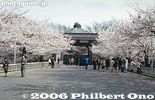
Roof of BudokanMar 22, 2006
|
|
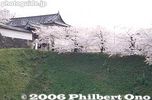
Mar 22, 2006
|
|

Mar 22, 2006
|
|

Mar 22, 2006
|
|

Mar 22, 2006
|
|

Cherry blossoms and moatMar 22, 2006
|
|

Chidorigafuchi Moat is one of Tokyo's most scenic spots for cherry blossoms. As soon as you exit Kudanshita Station (Tozai and Hanzomon Line), the cherries unfold right before your eyes.Mar 22, 2006
|
|

Crowd from Kudanshita StationMar 22, 2006
|
|

"Quadrifogli " (Clovers of Light) at Tokyo StationNov 06, 2005
|
|

Nov 06, 2005
|
|

Nov 06, 2005
|
|

Tokyo StationNov 06, 2005
|
|

"No stopping please..."Nov 06, 2005
|
|

Nov 06, 2005
|
|

Back of entranceNov 06, 2005
|
|

Less crowded at the end. After you pass through the main street, there are more decorations on the side street. You can also backtrack on the main street along the sidewalk only.So if you want to see the Millenario really quickly and don't mind not being in the middle of the street, go on the sidewalk.Nov 06, 2005
|
|

5:40 pm: Entered Tokyo Millenario streetNov 06, 2005
|
|

Nov 06, 2005
|
|

Nov 06, 2005
|
|

Nov 06, 2005
|
|

5:34 pm: Entrance in sightNov 06, 2005
|
|

Nov 06, 2005
|
|

Title of work: "Corolle Liberty" by Valerio FestiThe artist is Italian.Nov 06, 2005
|
|
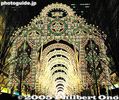
Entrance. The entrance gate is 22 meters tall and 19 meters wide.Nov 06, 2005
|
|

Tokyo Millenario was a brilliant sculpture of light mounted over a street in Marunouchi near Tokyo Station. From 1999 to 2005, it was held during the last week of the year until New Year's Day. The event was discontinued after 2005 due to constructioTokyo Millenario was mounted over a small street in Marunouchi called Marunouchi Naka-dori during the last week of the year. It lit up from 5:30 pm to 9 pm and on Jan. 1 (the last day), from midnight to 3 am. It became a major winter attraction, with over 2 million visitors in 2004.
The crowds were horrendous. It took 40 min. or longer just to get in. Photo: 5:05 pm: At the back of the line.Nov 06, 2005
|
|

Behind usNov 06, 2005
|
|

"Red light ahead, please stop..."Nov 06, 2005
|
|

5:16 pm: Our line merges with another one coming from Tokyo StationNov 06, 2005
|
|

Imperial Palace Nijubashi Bridge. It is one of Tokyo's symbols. Behind the bridge, you can see Fushimi Turret. This picture was taken on a different day and not while we were crossing the bridge.Nov 06, 2005
|
|

10:25 am: Clearing out the crowd. We were promptly herded to the exit to make room for the next horde of people waiting to see the Emperor who appeared two more times that day.Nov 06, 2005
|
|
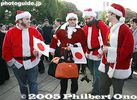
Even Santa Claus came (from Finland??). I'm told that they might be Finns. (Santa is from Finland.)Nov 06, 2005
|
|
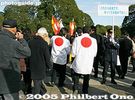
Japan fans. The sign says, "Downward slope ahead, walk slowly." It's only about 10:30 am, so it's a good time to walk around the Imperial Palace and the East Gardens. Although no flowers are in bloom, you might see autumn leaves.For more info about the Imperial Family and visiting the palace, see the Imperial Household Agency's Web site.Nov 06, 2005
|
|
| 1556 files on 7 page(s) |
 |
 |
 |
 |
6 |
|